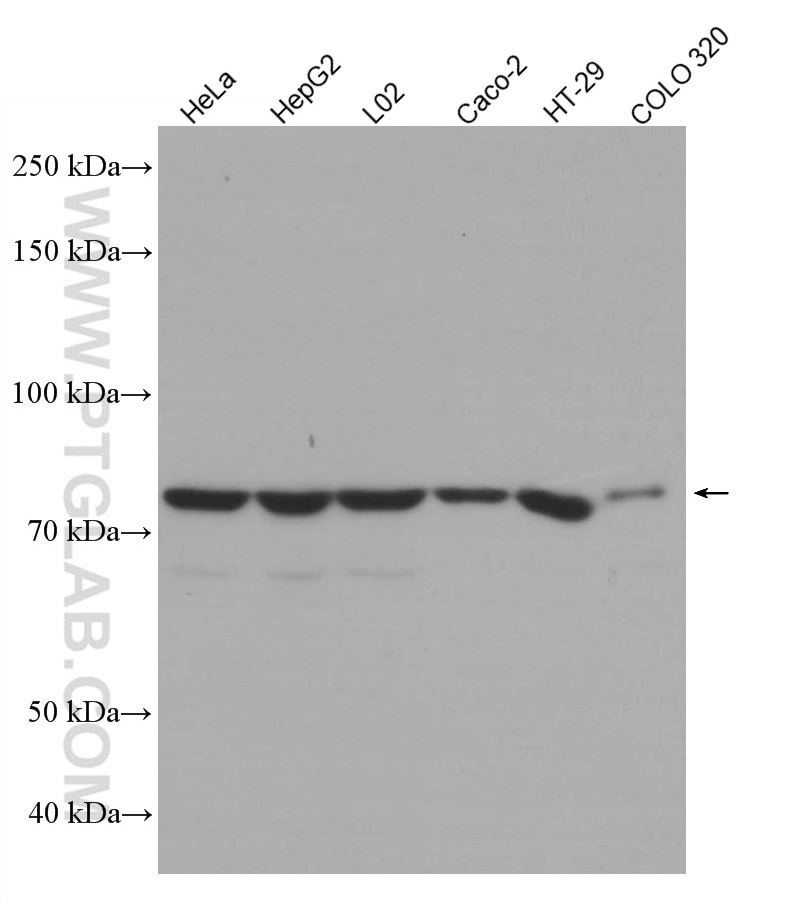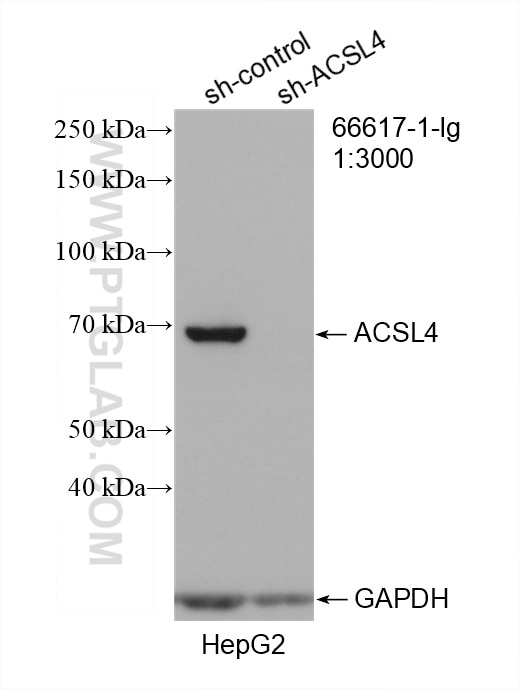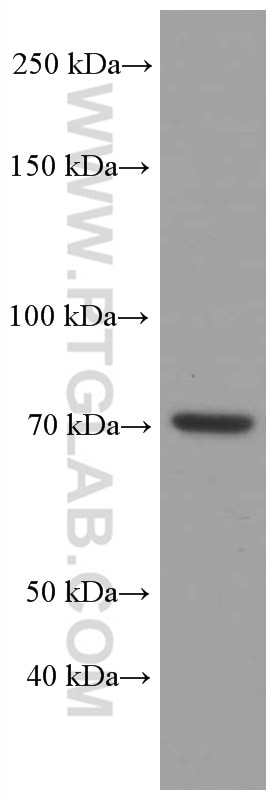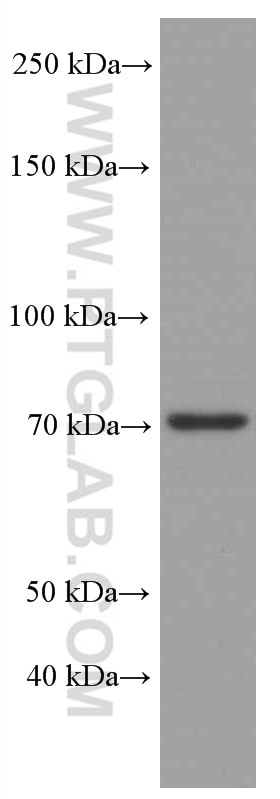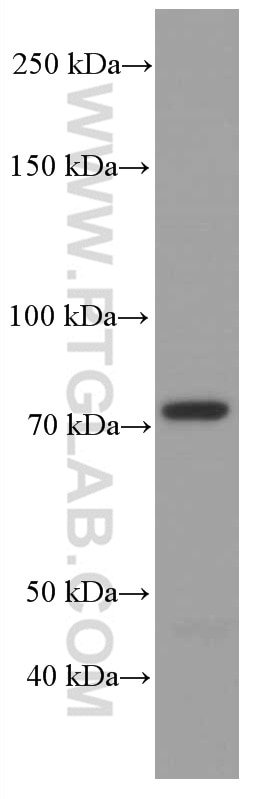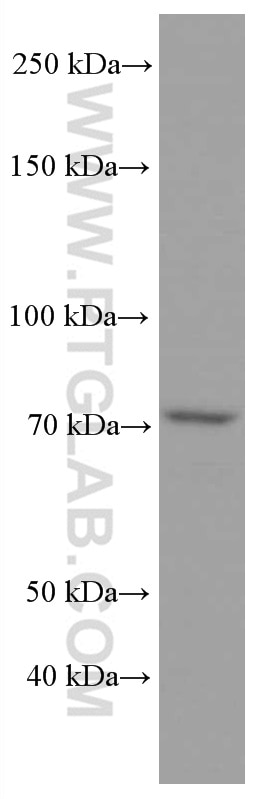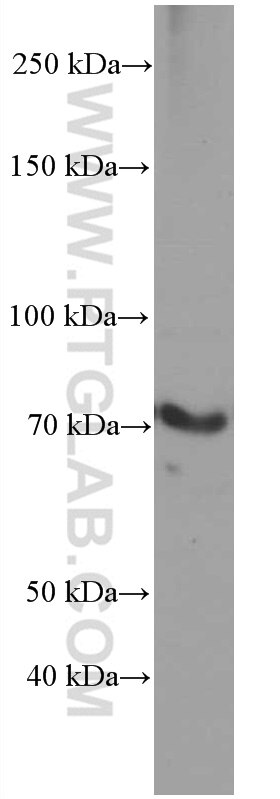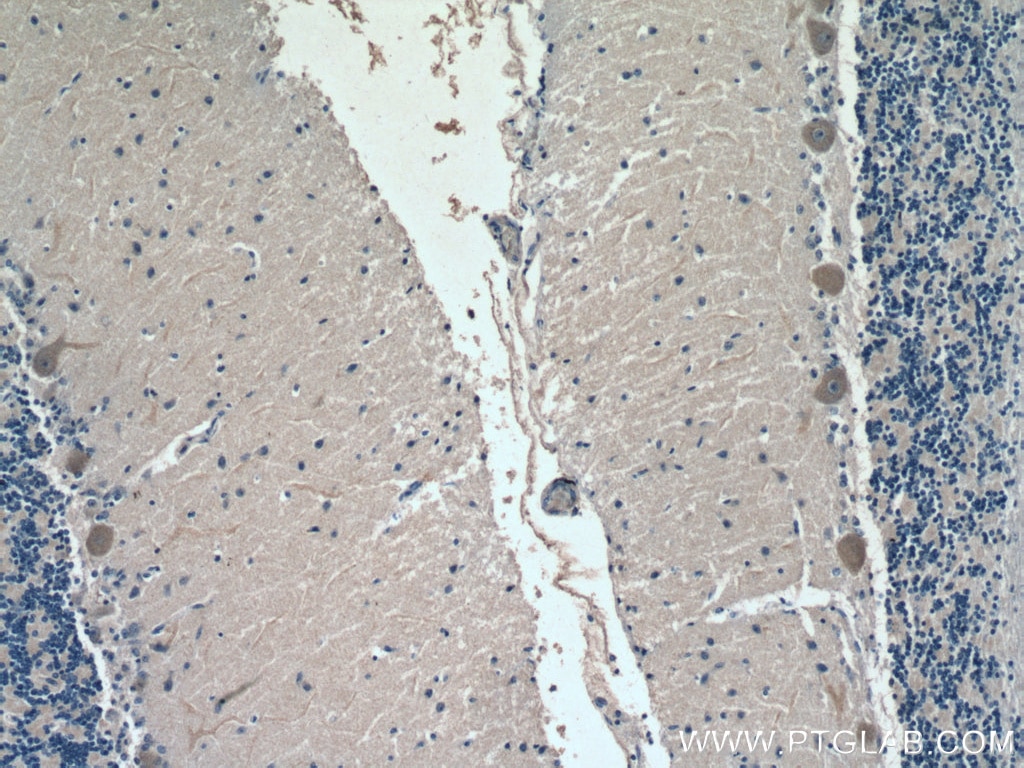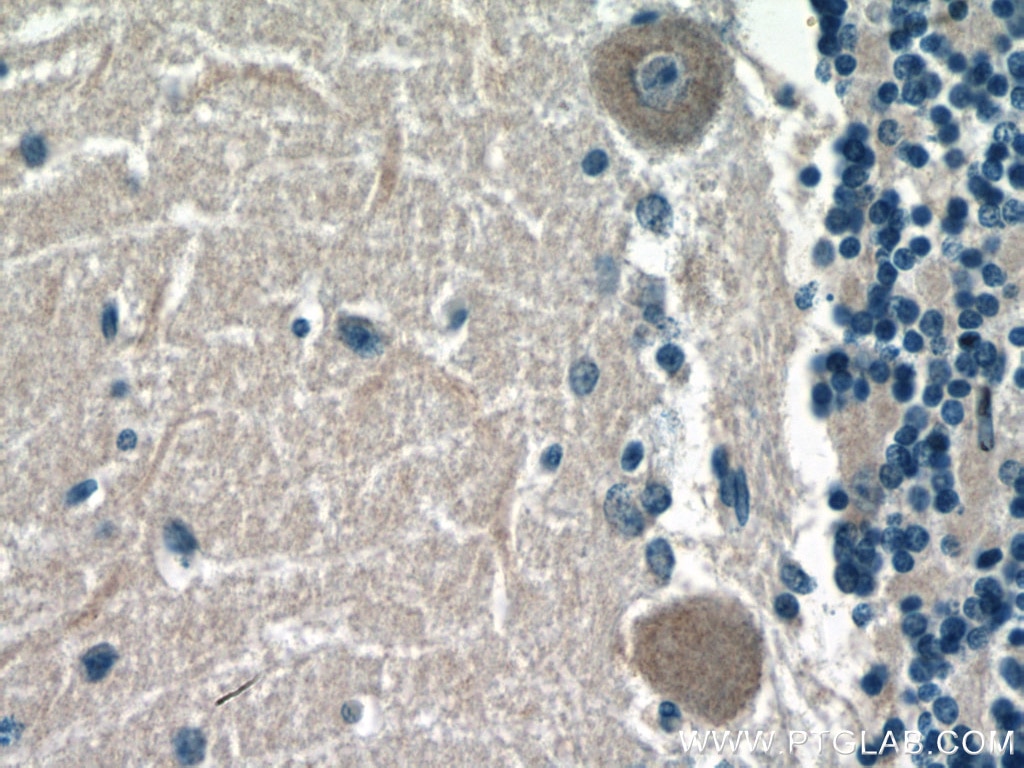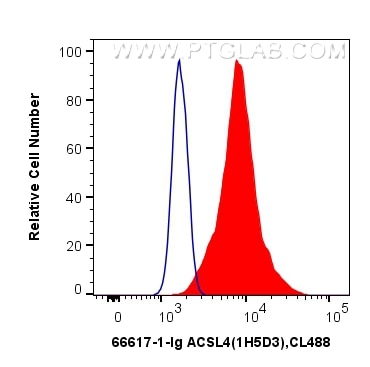Tested Applications
| Positive WB detected in | HeLa cells, HepG2 cells, Caco-2 cells, COLO 320 cells, L02 cells, HT-29 cells |
| Positive IHC detected in | human cerebellum tissue Note: suggested antigen retrieval with TE buffer pH 9.0; (*) Alternatively, antigen retrieval may be performed with citrate buffer pH 6.0 |
| Positive FC (Intra) detected in | HEK-293T cells |
Recommended dilution
| Application | Dilution |
|---|---|
| Western Blot (WB) | WB : 1:3000-1:10000 |
| Immunohistochemistry (IHC) | IHC : 1:250-1:1000 |
| Flow Cytometry (FC) (INTRA) | FC (INTRA) : 0.40 ug per 10^6 cells in a 100 µl suspension |
| It is recommended that this reagent should be titrated in each testing system to obtain optimal results. | |
| Sample-dependent, Check data in validation data gallery. | |
Published Applications
| KD/KO | See 2 publications below |
| WB | See 32 publications below |
| IHC | See 1 publications below |
| IF | See 6 publications below |
| IP | See 1 publications below |
Product Information
66617-1-Ig targets ACSL4/FACL4 in WB, IHC, IF, FC (Intra), IP, ELISA applications and shows reactivity with human samples.
| Tested Reactivity | human |
| Cited Reactivity | human, rat, bovine, sheep |
| Host / Isotype | Mouse / IgG1 |
| Class | Monoclonal |
| Type | Antibody |
| Immunogen |
CatNo: Ag18085 Product name: Recombinant human ACSL4 protein Source: e coli.-derived, PET28a Tag: 6*His Domain: 143-236 aa of BC034959 Sequence: LGKEAVVHGLNESEASYLITSVELLESKLKTALLDISCVKHIIYVDNKAINKAEYPEGFEIHSMQSVEELGSNPENLGIPPSRPTPSDMAIVMY Predict reactive species |
| Full Name | acyl-CoA synthetase long-chain family member 4 |
| Calculated Molecular Weight | 711 aa, 79 kDa |
| Observed Molecular Weight | 74 kDa |
| GenBank Accession Number | BC034959 |
| Gene Symbol | ACSL4 |
| Gene ID (NCBI) | 2182 |
| RRID | AB_2881977 |
| Conjugate | Unconjugated |
| Form | Liquid |
| Purification Method | Protein G purification |
| UNIPROT ID | O60488 |
| Storage Buffer | PBS with 0.02% sodium azide and 50% glycerol, pH 7.3. |
| Storage Conditions | Store at -20°C. Stable for one year after shipment. Aliquoting is unnecessary for -20oC storage. 20ul sizes contain 0.1% BSA. |
Background Information
Acyl-CoA synthetase long-chain family 4 (ACSL4) is a key enzyme that catalyzes long-chain fatty acids activation, and abnormal expression of ACSL4 is closely related to various biological responses, including steroidogenesis, inflammation response, cell death, immune activation response, and so on. Specifically, ACSL4 participates in ferroptosis, a promising target for tumor therapeutics.
Protocols
| Product Specific Protocols | |
|---|---|
| FC protocol for ACSL4/FACL4 antibody 66617-1-Ig | Download protocol |
| IHC protocol for ACSL4/FACL4 antibody 66617-1-Ig | Download protocol |
| WB protocol for ACSL4/FACL4 antibody 66617-1-Ig | Download protocol |
| Standard Protocols | |
|---|---|
| Click here to view our Standard Protocols |
Publications
| Species | Application | Title |
|---|---|---|
Cell Death Differ Redox regulation of TRIM28 facilitates neuronal ferroptosis by promoting SUMOylation and inhibiting OPTN-selective autophagic degradation of ACSL4 | ||
Cell Death Dis RAB17 promotes endometrial cancer progression by inhibiting TFRC-dependent ferroptosis | ||
J Cell Biol The deubiquitinase ZRANB1 is an E3 ubiquitin ligase for SLC7A11 and regulates ferroptotic resistance | ||
J Med Chem Seco-Lupane Triterpene Derivatives Induce Ferroptosis through GPX4/ACSL4 Axis and Target Cyclin D1 to Block the Cell Cycle. | ||
Int Immunopharmacol Ischemia-inhibited ferric chelate reductase 1 improves ferroptosis-mediated intestinal ischemia injury via Hippo signaling | ||
Bioorg Chem Discovery of novel benzo[b][1,4]oxazine derivatives as ferroptosis inhibitors |

